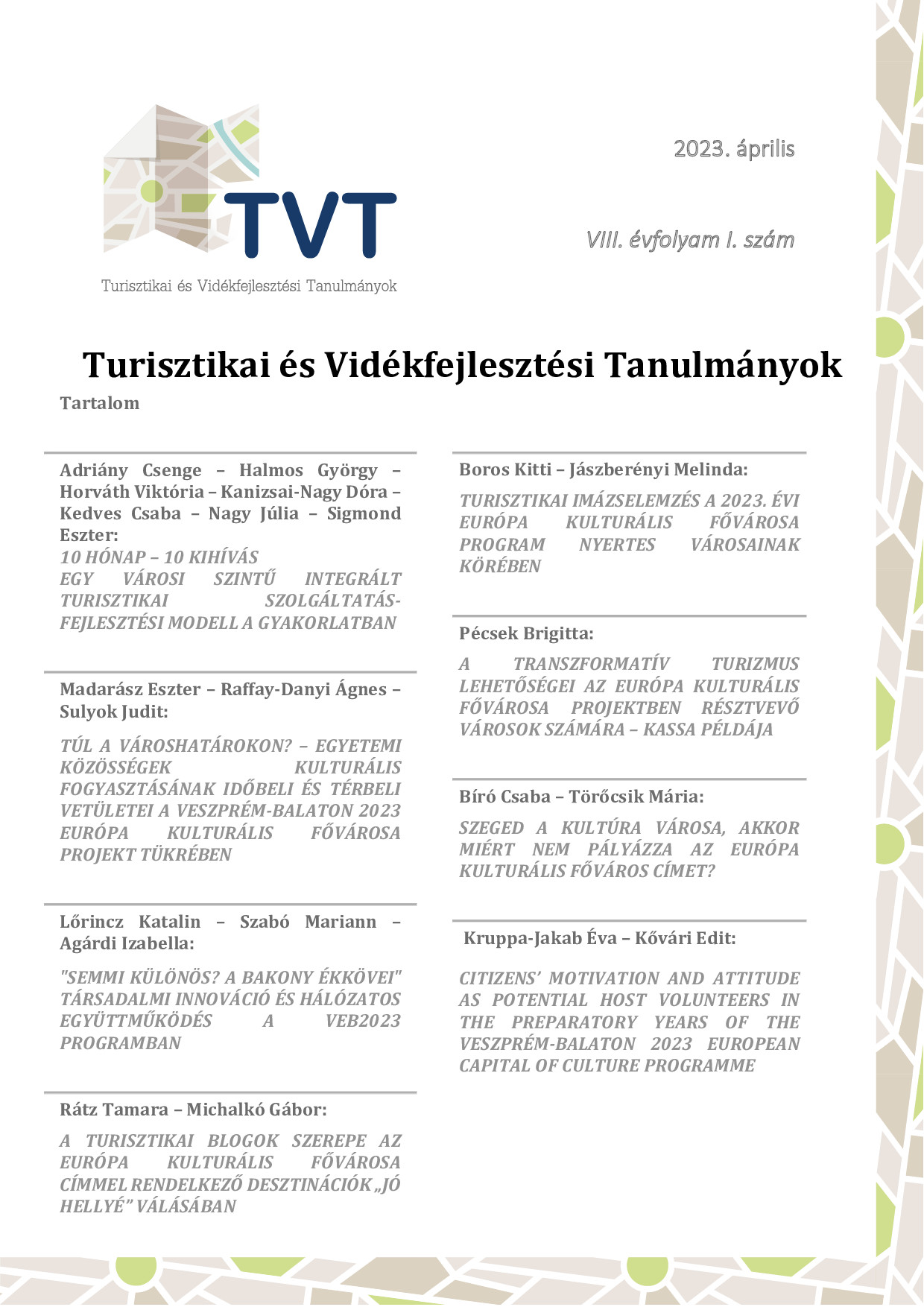Beyond city borders – Temporal and spatial patterns of university community’s cultural consumption in light of the European Capital of Culture programme
DOI:
https://doi.org/10.15170/TVT.2023.08.01.02Keywords:
cultural consumption, university community, spatial concentration, temporal concentration, seasonalityAbstract
The cultural elements of leisure activities have a high importance in each settlement’s supply, and have numerous positive effects on the consumers, this way contributing to higher quality of life. Like tourism mobility, cultural consumption can also be understood in time and space, temporal and spatial imbalance of the demand is observed. The consumption linked to the cultural activities of local communities has a fundamental role in the operation of touristic service providers. This study addresses the cultural consumption of the community of the University of Pannonia. The questionnaire-based survey conducted among both students and employees, identifies the temporal and spatial patterns of the cultural consumption including theatre, cinema, museum, exhibition, concert and festival visits. The spatial distribution of the consumption is primarily significant in Veszprém and its surrounding area, besides that the attractiveness of Budapest is also outlined. In the case of the temporal distribution, the results of this study shed light on the fact that the usage of other services linked to the cultural activities strengthens the off-season traffic for the service providers.


